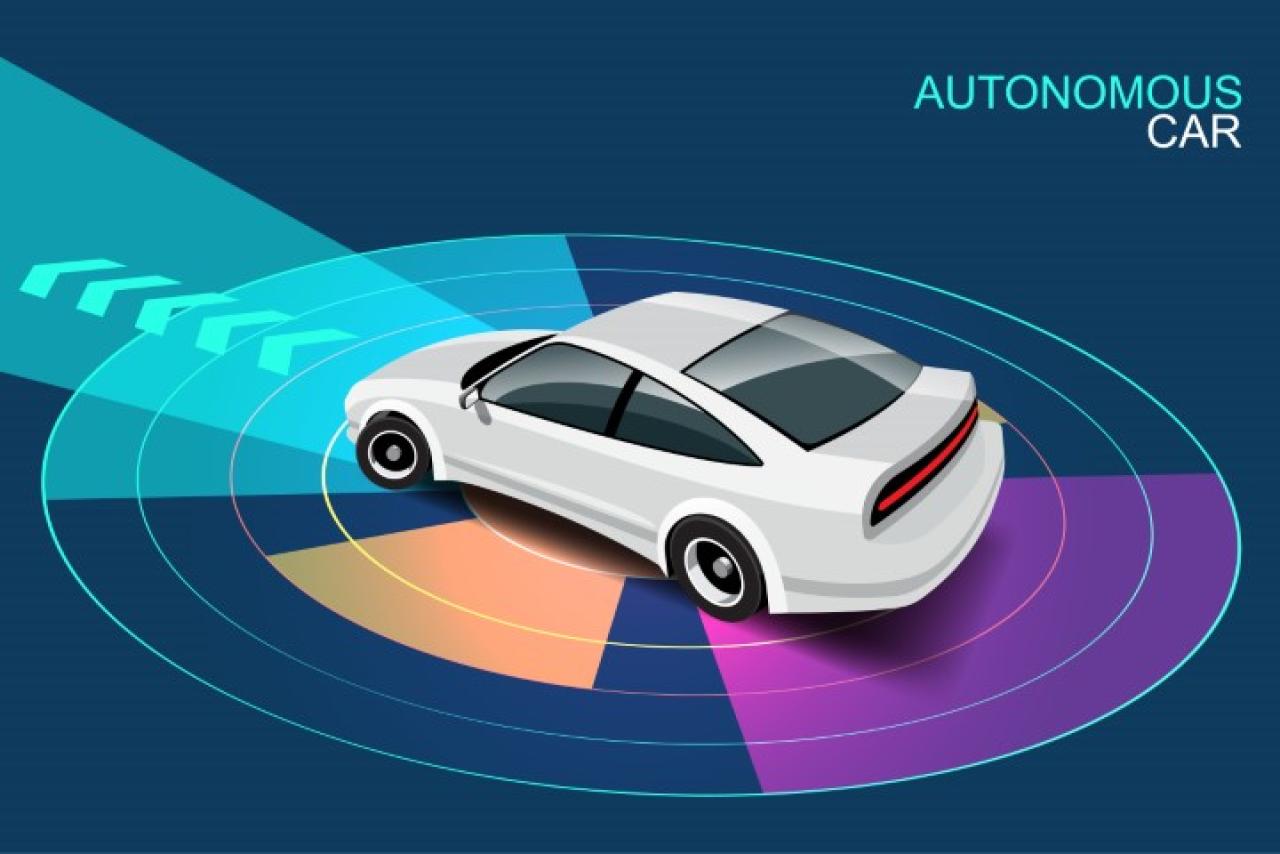In the fast-paced landscape of technological innovation, self-driving cars have emerged as a revolutionary force, promising to reshape the future of transportation. As these autonomous vehicles become increasingly integrated into our daily lives, a crucial question looms large: How safe are self-driving cars? In this exploration, we embark on a journey into the realm of autonomous driving, dissecting the technology, scrutinizing safety measures, and addressing the ethical considerations that accompany this automotive evolution.
The Rise of Autonomous Driving: A Technological Odyssey
1. Understanding Autonomous Technology
-
Delve into the fundamentals of autonomous driving technology, unraveling the intricate web of sensors, cameras, lidar, radar, and sophisticated algorithms that power self-driving cars.
-
Explore the levels of autonomy, from driver-assistance features to fully autonomous vehicles, providing a comprehensive understanding of the evolving landscape.
2. Machine Learning and Artificial Intelligence
-
Examine the role of machine learning and artificial intelligence in the decision-making processes of self-driving cars, emphasizing how these technologies enable vehicles to adapt to dynamic and unpredictable environments.
-
Discuss the iterative learning approach, where autonomous systems continuously improve through real-world data and experiences.
Safety Protocols: The Guardian Angels of Autonomous Vehicles
1. Sensors and Perception
-
Investigate how sensors, including cameras, lidar, and radar, function as the eyes and ears of self-driving cars, allowing them to perceive and interpret their surroundings.
-
Discuss the challenges and advancements in sensor technology, addressing issues such as inclement weather, low-light conditions, and the detection of unexpected obstacles.
2. Real-Time Decision-Making
-
Explore the real-time decision-making capabilities of self-driving cars, where algorithms process vast amounts of data to make split-second choices, prioritizing safety and efficiency.
-
Highlight instances where self-driving cars have demonstrated superior decision-making compared to human drivers, showcasing their potential to mitigate accidents.
3. Collision Avoidance Systems
-
Delve into collision avoidance systems, a critical component of self-driving car safety, examining how these systems detect potential collisions and take preemptive actions to prevent accidents.
-
Showcase case studies of real-world scenarios where collision avoidance technologies have proven effective in protecting occupants and pedestrians.
4. V2X Communication
-
Discuss the significance of vehicle-to-everything (V2X) communication, where self-driving cars exchange information with other vehicles, traffic infrastructure, and pedestrians.
-
Explore how V2X communication enhances situational awareness, reduces congestion, and improves overall road safety in interconnected transportation ecosystems.
Testing and Validation: Building Trust Mile by Mile
1. Simulated Environments
-
Examine the role of simulated environments in testing self-driving car algorithms, providing a controlled setting to evaluate various scenarios and refine decision-making capabilities.
-
Discuss the advantages and limitations of simulation testing, addressing the challenges of replicating the complexity of real-world driving conditions.
2. Real-World Testing
-
Explore the necessity of real-world testing for self-driving cars, where vehicles accumulate miles on public roads to validate algorithms and uncover edge cases.
-
Discuss the ethical considerations and safety precautions associated with real-world testing, balancing the need for progress with the responsibility to protect public safety.
3. Regulatory Standards
-
Investigate the role of regulatory bodies in establishing safety standards for self-driving cars, ensuring that manufacturers adhere to guidelines and prioritize public safety.
-
Discuss the challenges of creating standardized regulations in a rapidly evolving technological landscape, emphasizing the need for adaptive and forward-looking frameworks.
Ethical Dilemmas: The Crossroads of Technology and Morality
1. Trolley Problem and Moral Decision-Making
-
Examine the ethical challenges posed by the "trolley problem" and similar moral dilemmas faced by self-driving cars, where algorithms must make decisions in situations with potential harm.
-
Discuss the ongoing debate surrounding the ethical programming of autonomous vehicles and the varied perspectives on how algorithms should prioritize human life.
2. Data Privacy and Security
-
Address concerns related to data privacy and security in autonomous driving systems, exploring the potential vulnerabilities and safeguards necessary to protect user information.
-
Discuss the role of encryption, secure communication protocols, and legislative measures in safeguarding the privacy of individuals using self-driving cars.
3. Human-Machine Interface
-
Explore the importance of an effective human-machine interface (HMI) in self-driving cars, ensuring that passengers can interact with autonomous systems seamlessly and understand their capabilities and limitations.
-
Discuss the challenges of designing intuitive HMIs that foster trust and communication between humans and autonomous vehicles.
Accidents and Learning: The Road to Continuous Improvement
1. Accident Analysis and Improvement
-
Investigate notable accidents involving self-driving cars, dissecting the root causes and subsequent improvements made to enhance safety.
-
Highlight case studies where post-accident analysis has led to advancements in sensor technology, algorithms, and overall system robustness.
2. Transparency and Accountability
-
Discuss the importance of transparency and accountability in the autonomous vehicle industry, emphasizing the need for manufacturers to communicate openly about incidents, investigations, and safety measures.
-
Explore initiatives that promote collaboration between industry stakeholders, researchers, and regulatory bodies to share insights and improve overall safety.
Public Perception and Adoption: Bridging the Trust Gap
1. Public Trust in Autonomous Vehicles
-
Analyze the current state of public trust in self-driving cars, addressing common concerns and misconceptions that contribute to skepticism.
-
Discuss strategies employed by manufacturers and regulatory bodies to build trust, including educational campaigns, transparency initiatives, and public demonstrations.
2. Consumer Adoption and Behavioral Shifts
-
Explore the factors influencing consumer adoption of self-driving cars, from safety considerations to convenience and environmental impact.
-
Discuss potential behavioral shifts in society as autonomous vehicles become more prevalent, reshaping urban planning, commuting patterns, and the concept of vehicle ownership.
3. The Role of Regulations and Insurance
-
Investigate the evolving landscape of regulations and insurance policies related to self-driving cars, addressing the challenges of assigning liability in the event of accidents.
-
Discuss the collaborative efforts between policymakers, insurers, and technology companies to establish frameworks that protect both consumers and industry stakeholders.
The Future of Autonomous Driving: A Roadmap Ahead
1. Advancements in Technology
-
Explore the future advancements in autonomous driving technology, from improved sensors and perception systems to enhanced artificial intelligence and machine learning capabilities.
-
Discuss the potential for autonomous vehicles to evolve beyond personal transportation, impacting sectors such as logistics, healthcare, and public services.
2. Global Collaboration and Standards
-
Examine the importance of global collaboration and the establishment of international standards in advancing the safety and adoption of self-driving cars.
-
Discuss initiatives that foster collaboration between countries, industries, and research institutions to create a harmonized approach to autonomous vehicle development and deployment.
3. Societal Integration and Benefits
-
Discuss the societal benefits of widespread autonomous vehicle adoption, including reduced traffic congestion, enhanced accessibility for individuals with mobility challenges, and the potential for improved road safety.
-
Explore the potential economic and environmental advantages associated with the integration of self-driving cars into the broader transportation ecosystem.
Conclusion: On the Horizon of Automotive Transformation
As we navigate the uncharted territory of self-driving cars, the question of safety echoes through the corridors of innovation. The journey from human-driven to autonomous vehicles is not merely a technological shift but a profound societal transformation. While challenges and ethical dilemmas persist, the relentless pursuit of safety, coupled with technological advancements, signals a future where autonomous driving becomes an integral part of our daily lives. Join us on this odyssey into the realm of self-driving cars, where the road ahead is illuminated by the promise of innovation, safety, and a transportation landscape that defies convention.




